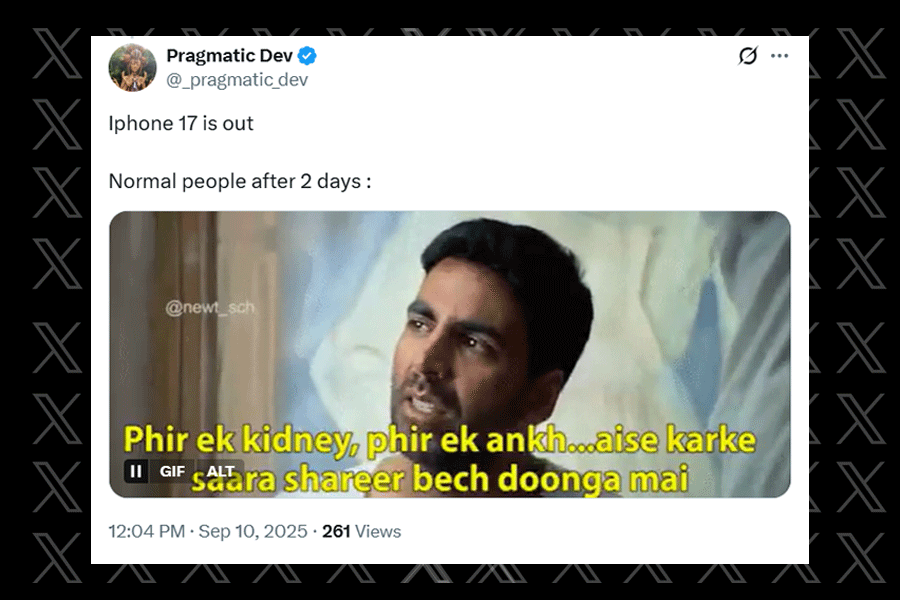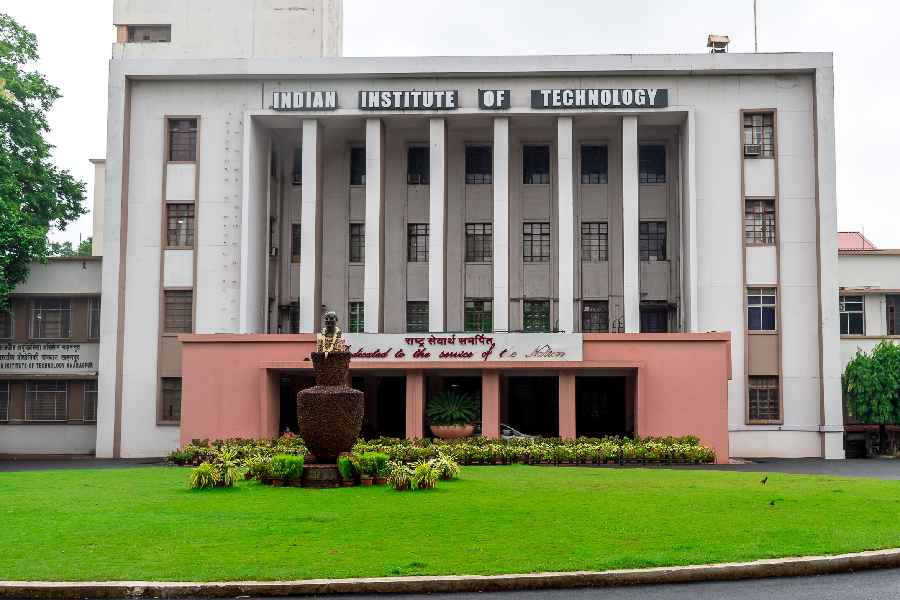 |
| REEL LIFE: Tabu and Irfan Khan in a scene from The Namesake |
The copy of The Namesake had been lying unread for five months. Mira Nair had been busy filming William Thackeray’s novel Vanity Fair, lost in the world of early 19th century England. Then weeks before she left for India, she had devastating news. Her mother-in-law, Kulsoom Alibhai — Ammy as she called her — had died while on a visit to New York for medical treatment. As Ammy was buried in the cold earth of New York, far away from the warm African soil that she had known all her life, Nair felt the pain of displacement and death.
She packed Jhumpa Lahiri’s novel to read on the flight to India. Nair was soon to find solace in the story of Ashima and Ashoke, a young Bengali couple who move from Calcutta to New York, and their boy named Gogol.
“I was filming in Jodhpur, with Reese Witherspoon. It was a colourful scene with elephants and dancers, but every evening I just wanted to return to my hotel room and read. I wanted to be in a cocoon with the book. I could feel Ashima’s pain and relate to it. I felt I could understand my own grief. It was the first time I was coping with the finality of loss. Later the two cities [Calcutta and New York] became bookends for the story,” says Nair.
We are talking in her London hotel, where she is doing back-to-back interviews, as The Namesake is screened at the London Film Festival. The film has shown to full houses and Nair is still buzzing from the reception the film has had. Bengali women have come up to her and hugged her and cried with her.
Sipping an exotic-coloured fruit cocktail, Nair talks passionately about the film which she describes as her “most personal film” ever.
So gripped was she by the story that she rang her agent immediately and told her to buy the rights. “I was afraid they may have gone, because the book had been out for a while,” she says. Cancelling all other commitments, she decided to concentrate on The Namesake and was filming in Calcutta within eight months. An ecstatic Jhumpa Lahiri, who met her in her office in New York, told her: “It was meant to be.”
“In a sense Jhumpa is an outsider to Calcutta,” says Nair. “She is Gogol. But I am an insider, I have lived there for 12 years. So she felt her book was in safe hands.” Lahiri has a walk-on role in the film and features as Jhumpa Mashi, a friend of the family.
There was some cynicism about how a Punjabi like me could handle it (the Bengali story). You know Punjabis are meant to be philistines… and Bengalis are high up in the intellectual order... they win Nobel prizes. But at the screening, the Bengalis were crying… and I said: Yes, bring it on,” laughs Nair.
One Bengali man even came up to Nair and said that he could recognise the Bengali accent spoken by Ashoke and pin it down to Jadavpur University.
“I love Calcutta,” she says. “Going back there was like a crazy embrace. They [Calcuttans] are passionate about cinema. Everybody knew about the film. The newspapers would announce that I was going to be filming at 9.00 am at Howrah Station, and a huge crowd would land up. Finally we had to beg people to let us get on with our work. It was chaotic, but hugely fun.”
The film moves poetically between Calcutta and New York, capturing the similarities and contrasts of the two cities. A sweeping shot of the Howrah Bridge in Calcutta merges with a view of the 59th Street Bridge over the East River in New York as Ashima and Ashoke begin their married life in New York.
“We had to make the transition between the two cities, and we wanted to do it without sub-titles and voiceovers. Both cities have a similar energy and the bridges and the river became the connecting point,” says Nair.
Images of Goddess Saras-wati being lowered from the sky into crumbling old Calcutta houses, baul singers in the streets and rickshaws bumping along the crowded bazaars bring Nair’s Calcutta to life, while Ashima’s first trip to a shabby down-town laundrette and the bleak view of the train tracks captures the seamy side of New York.
“This was always going to be an epic film,” says Nair. “It was going to move between periods and between two worlds. We didn’t want to do it with any clichés like sepia for the past. Instead it had to be about mood. It had to be austere photographic moments.”
After the colour and vibrancy of Monsoon Wedding where she takes her viewers into the heart of an exuberant and loud Punjabi family, Nair draws them into a gentle middle-class Bengali family in The Namesake. Ashoke, the self-effacing professor, is sensitively played by Irfan Khan who even manages to speak English with a Bengali accent, while Tabu takes on the role of Ashima, shifting effortlessly into the mode of the Bengali housewife. Kal Penn, an American actor of Indian origin (cast on the insistence of Nair’s 15-year-old son Zohran), makes a convincing Gogol.
While the story is set in a Bengali family, it is the universal story of immigration and loss of one’s loved ones, which is likely to strike a chord with Nair’s international audience.
“The baul singers and bhatiali songs were not there in the novel but I wove them in because I have loved the music for 34 years. Also, I had a kind of nationalistic idea, I wanted to make it a flag for desi creativity,” says Nair, who has used British musician Nitin Sawhney to compose the score for The Namesake. In the film, a teenage Gogol is captivated when he hears a baul singing outside the house and he doesn’t need his Walkman any more.
Nair says she believes in the four stages of man as defined in Hinduism, and thinks she is herself at the “Householder” stage. Films like Monsoon Wedding and The Namesake are a product of this stage. But now that her daughter is 23 and son 15, she feels free and wants to go back to her old style of filmmaking as she did with Salaam Bombay. At present she is working on a documentary on the Beatles in India, a series of 12-minute shorts on AIDS which will be screened in India with Bollywood films, and is looking for inspiration to make a film on west Asia.
“I think I will have to go there and walk the streets and find my story,” she says, before being rushed off for another interview. Knowing Nair, the simplest story, even if it is shot with a hand-held camera, will turn into another epic.











